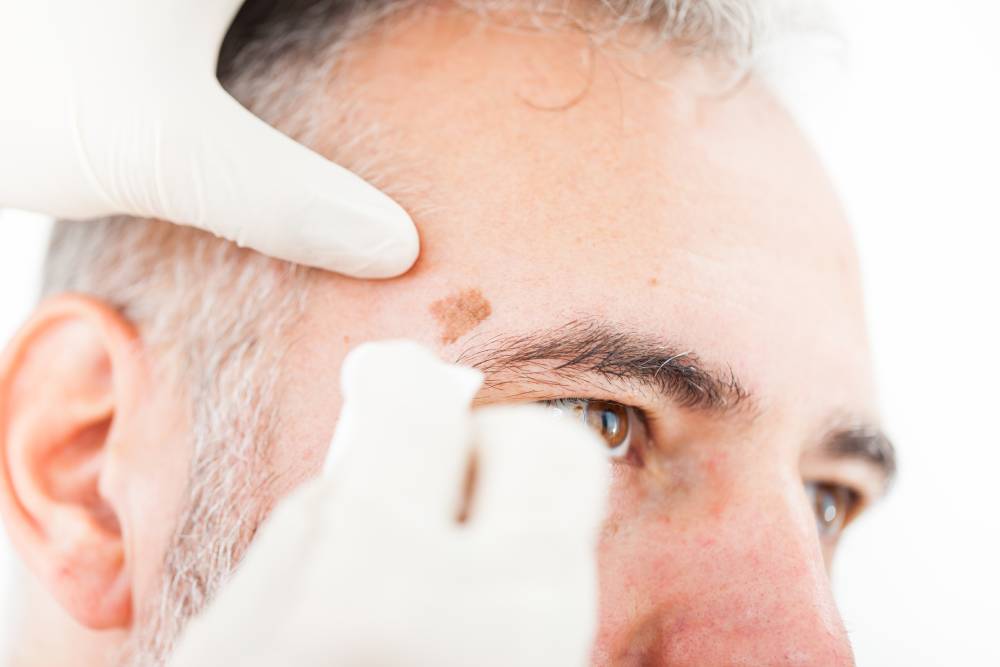
Skin cancer is the most common cancer in the U.S., affecting over 1 million Americans every year. Fortunately, increased awareness and screening has led to earlier detection and treatment. Furthermore, the importance of sunscreen and avoiding prolonged sun exposure will hopefully decrease the incidence of these cancers in the future.
Some of the more common types of skin cancer include squamous cell carcinoma, basal cell carcinoma and melanoma. Depending on the size, extent and overall patient status, these cancers can be treated with either topical therapies, surgery, chemotherapy and/or radiation.
Mohs micrographic surgery is a state-of-the-art treatment for skin cancer that yields the highest cure rates of all skin cancer treatments. The Mohs surgeon excises the cancer, while minimizing the removal of surrounding healthy tissue, and confirms complete removal by looking at the tissue under the microscope. Mohs surgery is extremely effective for cosmetically sensitive areas such as the nose, eyelids, lips and other areas of the face where preservation of tissue is critical.
We specialize in reconstructing the defects that result after Mohs surgery. We work closely with Mohs surgeons to assist in the reconstruction when needed. We utilize the latest techniques in local and regional flap repair and skin grafting to restore each patient’s natural appearance while optimizing their cosmetic and functional outcome.
FAQ
How is the reconstruction performed?
For small defects with adequate surrounding tissue laxity, linear closure may be possible. This entails placing the incision within a natural crease, meticulous closure, and minimizing tension on the wound to reduce the appearance of the resulting scar. For wounds not amenable to linear closure, local flaps are utilized that use adjacent, redundant tissue to close the defect. There are many different flap designs and configurations, and your specialist will be able to decide which is best for your defect.
Sometimes, skin grafting is used for reconstruction if a local flap places too much tension on the wound or distorts the natural anatomy. Skin grafts involve taking skin from one area of your body (donor site) and transposing it to another (defect site). This graft then heals and becomes incorporated with the surrounding tissue.
Occasionally, a more complex or multi-staged reconstruction is necessary for larger, more involved defects. Cartilage or bone may need to be reconstructed or replaced if it is removed during the cancer excision. A second procedure, around six weeks after your initial surgery, may need to be performed for further refinement.
How long is the procedure and where is it performed?
The length of the procedure depends on the extent of the reconstruction. Less involved reconstructions can take around 30 minutes while more complex reconstructions can take up to two hours.
Most often, the procedure is performed under local anesthesia in the office. Oral sedation, and occasionally IV sedation, can be utilized if needed. This avoids a trip to the hospital or outpatient surgery setting. Patients can go home the same day.
When is the reconstruction performed?
We strive to provide the best, safest, most convenient surgical experience for each patient. Many of the reconstructive procedures are scheduled along with the Mohs surgeon and can be performed on the same day as the excision. Sometimes, the reconstruction may need to be done the following day. In this case, the patient goes home with a small bandage to keep the wound site clean and returns the following day for surgery.
Call Advanced Aesthetics at (856) 500-3223 for more information or request an appointment today!